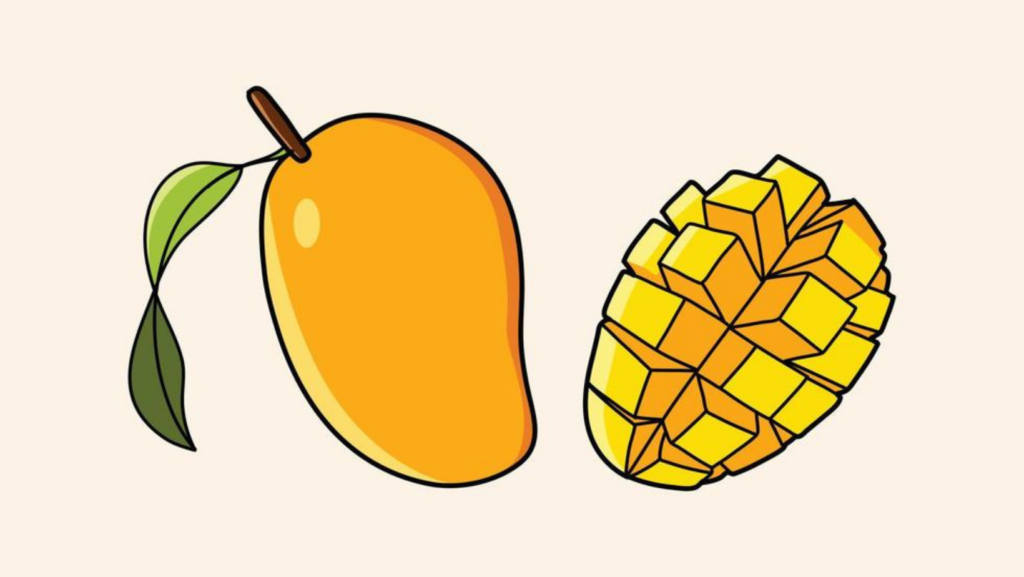
Imagine a ripe, juicy mango, its vibrant colors captured perfectly on paper. The art of drawing can turn this simple fruit into a masterpiece. This article will delve into the fascinating world of drawing, with a specific focus on how to sketch a mango.
Whether you’re a seasoned artist or a beginner, the challenge of capturing the unique shape and texture of a mango can be an exciting endeavor. This guide will provide you with the know-how to bring this tropical fruit to life on your canvas.
So, let’s grab those pencils and embark on a creative journey that’ll not only enhance your drawing skills but also add a new dimension to your understanding of art. Stay tuned as we peel back the layers of this intriguing subject.
Drawing:tk5t30b16_q= Mango

The art of sketching a mango offers a captivating exercise for artists seeking to enhance their skills in rendering unique shapes and textures. This segment guides artists in exploring diverse tools, materials, and techniques that contribute to generating life-like representations of this tropical fruit.
Artists employ a variety of tools and materials in rendering images of mangoes onto paper. Tools typically include graphite pencils ranging in hardness from a standard HB to 6B for darker tones and finer details. A quality eraser aids in correcting mistakes and creating highlights, while a blending stump promotes blending and softening lines. Additionally, consider a paper choice carefully: a slightly textured paper proves valuable in capturing the mango’s unique surface texture. Just as an example, Strathmore art papers garner high recommendations among artists for fruit sketches.
Techniques for Realistic Mango Textures

Achieving a believable representation of the mango’s texture calls for mastery of several drawing techniques. Use of hatching, which involves creating tones using parallel lines, and cross-hatching, a technique employing intersecting lines to create depth, infuses the sketch with added realism. But keep in mind, success hinges on precisely observing and capturing the contours and hues of the mango. Skillful manipulation of light and dark values, critical to conveying the three-dimensional quality of the subject, lets the mango appear rounded and solid. Lastly, artists employ blending to improve the sketch’s smoothness and to fine-tune the mango’s distinctive texture.
Remember, mastering these techniques and tools takes practice, but over time, realistic renditions become more achievable. Drawing mangoes serves not merely as an exercise but also a journey in deepening artistic understanding.
The Significance of Mango in Art

The mango, a subject of artistic exploration, bears significant interpretation in art forms. Its vibrant color, distinct shape, and cultural importance have transcended into an artistic symbol gracing canvases globally.
Art often utilizes the mango as a symbol, permeating in various cultures. In Hinduism and Buddhism, it’s regarded as a divine fruit, symbolizing attainment of perfection and enlightenment. An example of such representation can be seen in ancient Indian murals and sculptures, where mango trees are often depicted as a symbol of love and fertility.
In Chinese art, mango motifs represent abundance and good luck, often featuring in paintings and fabrics. For instance, the work of renowned Chinese painter Qi Baishi, includes a series depicting ripened mangoes as a symbol of bountiful harvest.
Mango in Modern Art and Media
Modern art and media also encapsulate mango’s potency as an artistic icon. It’s frequently featured for its visual appeal and association with tropical charm. Artists in modern times, such as Frida Kahlo, incorporated mangoes in their work to create engaging compositions. The presence of a mango tree in her painting “Love Embrace of Universe” is a perfect instance of its use in modern art.
Furthermore, the media industry, particularly in film and advertising, employs the vibrant appeal of mangoes to captivate audiences. As an ingredient of choice in culinary television and online recipe videos, it’s showcased not just as a fruit, but an element of intrigue. This portrays the mango’s persistence as a significant artistic symbol across diverse mediums.


